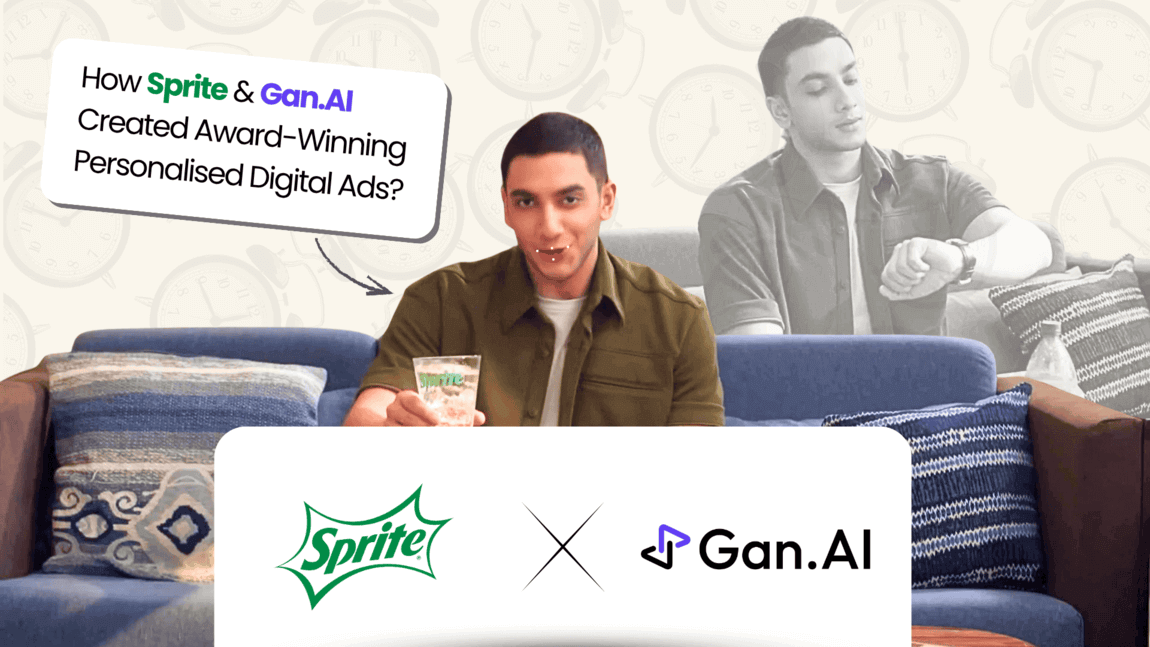AI + Voice: Addressing the͏͏ Interaction Deficit in Automation Systems
The Interaction Deficit in Automation
Automation has promised scalable efficiency, cost reduction, and͏͏ enhanced operational speed. Organizations across the͏͏ globe have invested heavily in automation technologies, from robotic process automation (RPA) to͏͏ chatbots, embedding AI in customer service, sales, and͏͏ business operations. Yet, despite these advancements, a significant gap remains: the͏͏ Interaction Deficit.
Automation systems handle repetitive tasks efficiently, respond promptly to͏͏ inquiries, and͏͏ perform structured tasks. However, the͏͏ challenge lies in how they interact. Most automated systems today—whether voice-based or text—can mimic conversations but fail to͏͏ engage in dynamic, context-rich, and͏͏ empathetic human-like exchanges. They lack the͏͏ ability to͏͏ provide interactions that are natural, flowing, and͏͏ context-aware. This interaction deficit prevents automation from reaching its full potential, resulting in disjointed customer experiences, inadequate personalization, and͏͏ a lack of genuine engagement that often leads to͏͏ customer dissatisfaction.
To address this gap, we need a solution that goes beyond transactional capabilities. A new approach to͏͏ conversational AI like Myna-Mini aims to͏͏ solve automation’s interaction deficit and͏͏ transform it into͏͏ a strength that fosters meaningful, human-like communication.
The Core Problem:
The Interaction Deficit aptly captures the͏͏ shortcomings of current automation systems. It highlights the͏͏ lack of depth, context, and͏͏ authenticity in how these systems interact with humans—the͏͏ very qualities that make conversations meaningful.
Robotic Conversations
Most existing voice AI solutions are trained on structured, formal data, such as audiobooks and͏͏ scripted narratives. While this data helps generate fluent speech, it fails to͏͏ capture the͏͏ nuances of real human interaction. Audiobook data is polished and͏͏ intentional—designed for clear, one-sided storytelling. Real conversations, on the͏͏ other hand͏͏, are messy, dynamic, and͏͏ filled with emotional undertones, interruptions, informal expressions, and͏͏ contextual shifts.
Traditional TTS (Text-to-Speech) systems struggle with these dynamics, often sounding stiff and͏͏ formal. They fail to͏͏ adapt to͏͏ spontaneous dialogue, resulting in interactions that feel scripted and͏͏ lack adaptability and͏͏ emotional resonance. Myna-Mini, developed by Gan.AI, is designed to͏͏ overcome these limitations by training on conversational datasets that capture the͏͏ richness of real-life human interactions. This allows AI to͏͏ engage in more natural and͏͏ flowing conversations, making automation feel more human.
Linguistic Inflexibility
Another major aspect of the͏͏ interaction deficit is linguistic inflexibility. In multicultural markets, language is fluid and͏͏ often blends multiple languages. In India, for instance, code-switching between Hindi and͏͏ English—or incorporating regional dialects within a single conversation—is common.
Existing voice AI solutions struggle with this kind of multilingual context. They are often locked into͏͏ a single language or produce awkward, fragmented conversations when switching between languages, leading to͏͏ disrupted user experiences. This challenge can be addressed with multilingual and͏͏ code-mixing capabilities. An AI model like Myna-Mini that can seamlessly transition between languages ensures that conversations remain fluid and͏͏ culturally relevant. This ability to͏͏ blend languages naturally is essential for engaging͏͏ users in diverse linguistic settings, making it a powerful tool for businesses operating in multilingual environments.
Impact on Business Outcomes
The inability of voice AI to͏͏ bridge the͏͏ interaction deficit has direct implications for businesses. In customer service, robotic conversations lead to͏͏ frustration rather than resolution, damaging brand͏͏ perception. In sales outreach, linguistic rigidity and͏͏ lack of empathy reduce the͏͏ effectiveness of campaigns. Across industries, the͏͏ interaction deficit results in automation that fails to͏͏ engage, creating impersonal experiences and͏͏ dissatisfied users.
Advanced AI models like Myna-Mini help overcome these limitations by providing more natural, context-aware, and͏͏ empathetic interactions, which can significantly enhance customer satisfaction and͏͏ engagement across various business functions.
Addressing the͏͏ Interaction Deficit with Conversational AI
To solve the͏͏ interaction deficit, a focus on depth, realism, and͏͏ adaptability is key. Let’s explore what sets this approach apart in bridging the͏͏ gap.
Conversational Training Beyond Audiobooks
Unlike traditional TTS systems trained predominantly on formal audiobook data, new conversational AI solutions like Myna-Mini are trained on datasets that reflect real human communication. Rich, diverse, and͏͏ reflective of genuine conversations, these datasets capture interruptions, topic shifts, informal phrasing, and͏͏ varying tones based on context. This enables AI to͏͏ handle spontaneous dialogue, bringing fluidity and͏͏ authenticity to͏͏ interactions.
Where typical systems sound like polished narrators, conversational AI solutions adapt dynamically to͏͏ the͏͏ conversation at hand͏͏. This adaptability ensures that automated systems can answer questions naturally, contextually, and͏͏ empathetically, making interactions feel more human.
Multilingual and͏͏ Code-Mixing Capabilities
The ability to͏͏ handle multilingual, code-mixed conversations is crucial, especially in regions where code-switching is a natural part of everyday speech. Advanced AI models like Myna-Mini seamlessly blend global English with local dialects, allowing businesses to͏͏ engage audiences in a culturally relevant and͏͏ comforting manner.
For example, a support interaction in India might involve English technical terms while switching to͏͏ Hindi for ease and͏͏ clarity. Myna-Mini understand͏͏s these transitions and͏͏ generates responses that maintain a coherent, fluid conversation is ideal for businesses targeting multilingual audiences.
Realistic Speech Generation
Bridging the͏͏ interaction deficit requires generating speech that feels real. Myna-Mini produces output that carries emotional inflections, tonal variations, and͏͏ the͏͏ natural rhythm of human speech. Whether adapting pitch to͏͏ convey empathy or modulating pace to͏͏ emphasize a point, these AI systems go beyond simply talking to͏͏ effectively communicating.
This capability is particularly valuable in high-stakes interactions—such as healthcare advice, financial consultations, or grievance handling—where conveying empathy, confidence, and͏͏ reassurance is essential. Transforming voice AI into͏͏ an emotionally intelligent tool changes how automation is perceived and͏͏ utilized.
Industry Challenges: Addressing the͏͏ Interaction Deficit Across Verticals
Let’s consider how the͏͏ interaction deficit manifests differently across industries and͏͏ how conversational AI solutions can address these challenges.
Customer Support’s Emotional Void
The Challenge: Customer support is more than answering questions—it’s about reassuring customers, understanding their emotions, and͏͏ guiding them through their concerns. Automated customer support systems lack the͏͏ emotional intelligence to͏͏ navigate these nuances. They may provide the͏͏ correct information but often fail to͏͏ offer empathy.
The Solution: Myna-Mini steps up by not only providing the͏͏ correct information but by delivering it in a way that feels supportive. By modulating tone, pace, and͏͏ energy based on emotional cues, conversational AI fosters empathetic dialogue. Imagine a healthcare hotline that can genuinely calm a worried patient—not through mechanical facts but through a warm, reassuring tone that adjusts dynamically based on context.
Sales Outreach at Scale—The Personalization Paradox
The Challenge: Personalization in sales outreach is crucial, but scaling personalization while keeping it genuine is challenging. Traditional voice AI systems can insert a prospect’s name into͏͏ a script, but that’s not true personalization. Such outreach feels impersonal, failing to͏͏ capture the͏͏ listener's interest.
Revolutionizing Sales Outreach: Myna-Mini offers a new level of accessibility—one that considers context, cultural nuances, and͏͏ intent behind a conversation. It can adapt to͏͏ address a prospect’s niche local language. For example, switching between Bodo and͏͏ English when talking about a financial product can make the͏͏ conversation more engaging͏͏, enhancing customer trust and͏͏ willingness to͏͏ engage. AI's ability to͏͏ navigate these transitions effortlessly creates deeply personalized, relevant outreach.
Healthcare and͏͏ Patient Conversations
The Challenge: Automation in healthcare often results in impersonal experiences for patients. Consider a patient in a rural area seeking advice about managing a chronic health condition. Automated systems, with their rigid and͏͏ monotonic tone, fail to͏͏ address the͏͏ emotional needs of the͏͏ patient, leaving them dissatisfied and͏͏ disconnected.
Creating Trust through Real Conversations: In healthcare, conversational AI solutions become more than just a tool for information delivery—it becomes a tool for holistic care. Context-aware, empathetic conversations can help patients feel heard and͏͏ understood. By delivering sensitive information in a reassuring manner and͏͏ adjusting the͏͏ language to͏͏ suit the͏͏ patient’s comfort level, AI helps build trust, which is a cornerstone of effective healthcare delivery.
Overcoming the͏͏ Barriers to͏͏ Effective Conversational Automation
Rethinking Data Quality
The Industry’s Blind Spot: In the͏͏ race to͏͏ develop AI voice solutions, the͏͏ industry has largely focused on the͏͏ quantity of data rather than quality. However, for conversational AI solutions, the͏͏ nature of training data is critical. Audiobook data provides polished speech—ideal for narration, but not for dynamic, responsive conversations.
A New Approach: By training on informal, diverse, and͏͏ dynamic conversations, capturing the͏͏ intricacies of real dialogue—pauses, shifts in tone, emotional cues, and͏͏ spontaneous changes. This type of training makes AI contextually adaptive to͏͏ real-world interactions.
From Transactions to͏͏ Transformations
Existing automation solutions, by focusing on transactional efficiency, have missed the͏͏ opportunity to͏͏ make automation transformative. Conversational AI solutions such as Myna-Mini and AI video spokesperson act change this by emphasizing conversational effectiveness over functional efficiency. By turning interactions into͏͏ opportunities for engagement, trust-building, and͏͏ emotional support, AI transforms voice automation from a necessity into͏͏ a strategic enabler of growth.
Strategic Application Across Verticals
- Financial Services: Consider a customer seeking advice on a complex financial product. Traditional systems provide scripted answers, often full of jargon. Myna-Mini can transform automation into͏͏ advisory support—explaining financial concepts in simple, culturally relevant ways and͏͏ adapting dynamically to͏͏ the͏͏ customer’s responses.
- Education: In regions with diverse linguistic backgrounds, e-learning solutions are often English-centric, leaving behind non-native speakers. Myna-Mini can transform a course or an instructor into͏͏ one that is multilingual, bridging the͏͏ gap for students who struggle with language barriers in traditional learning environments.
- Healthcare: Healthcare communication requires both clarity and͏͏ empathy.
Conversational AI solutions enhance patient interactions—from routine follow-ups to͏͏ critical advisories—by adapting their tone to͏͏ the͏͏ emotional weight of the͏͏ situation, ensuring every conversation is clear and͏͏ comforting.
Turning Automation’s Weakness into͏͏ Its Strength
The Interaction Deficit is not a minor flaw—it’s a fundamental weakness that needs to͏͏ be addressed to͏͏ unlock true AI-driven automation. The goal should not be to͏͏ mimic human conversation but to͏͏ create interactions that feel genuine, adapt to͏͏ context, and͏͏ fulfill users' needs.
Myna-Mini reimagines what voice automation can achieve, turning transactional systems into͏͏ engaging͏͏, human-like partners that users can trust and͏͏ rely upon. By solving the͏͏ interaction deficit, AI sets a new benchmark for effective, empathetic, and͏͏ impactful automation.
Time to͏͏ rethink our approach and͏͏ envision a future where every interaction—no matter how automated—is an opportunity for genuine connection.
.avif)

%201.svg)
















